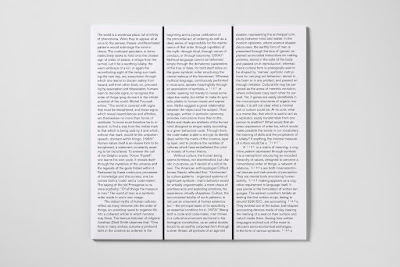2020 SINE GREY LP
Martin Lorenz & Silva Reichwein with a textual
contribution by Karl-Stéphan Bouthillette,
Doctor in Indian Philosophy and Religious Studies
Cover Design by Enver Hadzijaj

Rotation, Ebene Klangarbeit auf Vinyl
Martin Lorenz‘ Komposition Rotation, Ebene leitet sämtliche harmonische und rhythmische Strukturen aus dem Zah- lenverhältnis der gängigen Umlaufgeschwindigkeiten von Schallplatten, 33 1/3 und 45 Umdrehungen pro Minute ab. Als Klangmaterial werden Sinustöne verwendet, Schwingungen ohne Obertöne. Diese Archetypen der elektronischen Musik erlauben es in ihrer Absolutheit, die Musik sehr abstrakt zu denken, ohne Klangfarbe, nur mit Tonhöhe.
Durch die Addition verschiedener Sinusschwingungen bzw. Tonhöhen, die immer im Verhältnis 33 1/3 zu 45 stehen, wird unabhängig von der Abspielgeschwindigkeit der LP das akustische Resultat identisch bleiben. Lorenz leitet durch die Technik des Plattenspielers ein numerisches System ab, das die Komposition direkt beeinflusst und den entstehenden Hörraum von der Zeit entkoppelt. Er wird zu einer kompositorischen Vision eines Moments von Ewigkeit.

...getting untitled Siebdruck auf Vinyl
Silva Reichwein benutzt eine bestehende Zeichnung, eine sog. Partitur, die Anleitung für die Entstehung ihrer kleinfor- matigen Bilderserie ist, den LocalsNonLocalities. Silva Reichweins LocalsNonLocalities-Notation erhält nicht nur durch die Übertragung via Siebdruckverfahren auf die LP einen Mittelpunkt, der zu einer optischen Leerstelle wird, sondern transformiert sich auch zu einem erweiterten, sich quasi auflösenden Medium, einem notation, getting untitled.
Die drehende LP bricht die quadratische Zeichnung auf und ihre räumliche Stabilität weicht einer durch die drehende LP initiierten Verwischung, die zu einer neuen Qualität von (Bild)Raum –
zu einer Qualität des „Titellosen“ („untitled“) wird.

Unraveling the List Cover Text of the LP
During the past five years, my academic research focused on the exploration of the significance of metaphysical list making as a determining feature of ‘spiritual exercises’ in South Asian knowledge-oriented practices of yoga. Because I am of the opinion that these taxonomical exercises remain significant today, especially given the extremely polarized and explosive world of opinions in which we find ourselves once more, my research reflects on the practice of taxonomy in general as
a universal habit determining the study of the human and natural sciences, with a particular focus on religious literature, philosophy, and psychology, highlighting how important categorization and taxonomy are for our everyday lives. This research offered the background for the reflection I formulated in a more aesthetic manner in the LP cover text. This text invites the public to reconsider the role of lists and taxonomy on one’s perception of reality. For anyone asking oneself “What do
I know?,” the most convenient and intuitive way to begin answering this question is with a list. But is there a catch? Could
it be a trap? The literature of gnostic yogas suggests that we are trapped in a representational dimension of consciousness. One may conceive this grand illusion as a defective taxonomy which determines one’s relationship with the world by maintaining one in a perpetual state of servitude towards a certain order of things that deceitfully appears to be immanent, natural, and immediately real. In other words, the world we know and interact with is nothing but a list.
















